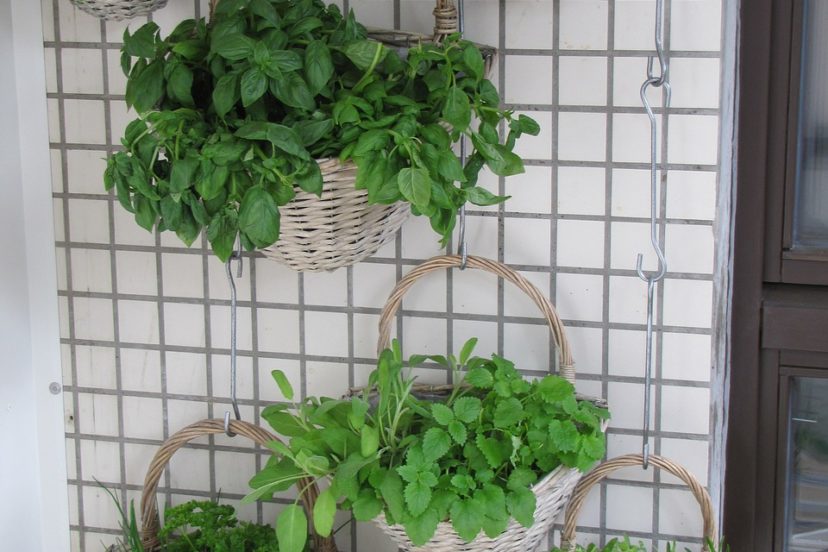5 Tips For Your First Vertical Garden

Are you considering growing your own food garden but only have limited space? Here are 5 tips for your first vertical garden and this is why they are important.
Many people live in an apartment with no yard, or in a city with limited yard space. Regardless of what limitations you might have there is always a solution with many different types of gardening strategies available. Rather than the traditional gardening method of growing out, you might want to consider a type of vertical garden.
The vertical gardening trend is beginning to catch on, and for very good reasons. Even if you do not have the largest vertical garden, using vertical garden ideas lets you grow the maximum amount of fruits and vegetables in a limited space.
If you want to improve your garden or start a new one, the colorful masterpiece of a garden you imagine can be in a small space on your balcony, front porch, or even inside your living space. You can enjoy all the rewards of traditional gardening with your vertical garden, in less space. Learn how to grow up, vertical farming ideas for your own vertical garden.
Step 1 Start Your Gardening Diary Planner
”By failing to prepare, you are preparing to fail.” – Benjamin Franklin The gardening diary planner is a first step resource to create your maximum vertical garden success. Even if you are only gardening a small area, planning on paper and tracking progress could be a key factor for new garden design, garden layout, and best results. This can be kept as simple as you like with a simple garden layout and tracking everything with your gardening diary planner will simplify the process.
During your vertical garden planning, notice your sunny areas and shady areas then choose your plants according to plans that best accommodate your needs as well as the available space. The amount of sunlight or ability to install grow lights in an area can help you to decide the best plants to grow. There are also some fruits and vegetables that grow well in low light conditions so if there is limited sunlight in an area that is also something to consider.
Step 2 Different Types of Vertical Garden
Step two in the 5 tips for your first vertical garden is about your garden layout and designing process. This is not only to decide what you want to grow, but also how to grow it. What systems or strategies will you use? Does your vertical garden use hanging baskets? Old, untreated pallet wood can be used to fashion a vertical planter box. Simple Shelves installed on your house can easily become a vertical container garden. Another idea uses Trellises which work perfectly for growing naturally vining fruits and vegetables, like cucumbers and tomatoes or berries. Explore the unlimited possibilities!
Step 3 Create a Simple Garden Layout
Now that we have a plan, it’s time to add the simple garden layout you are considering for your vertical garden. Your garden layout can show exactly what plants to grow and the placement of your plants. Leafy green vegetables do well in low light conditions so that is something to consider. There are also other cold weather crops that are hardy enough to do well even with low light conditions. With a vertical gardening area that receives good sunlight, you have limitless choices of what to grow in your garden.
Step 4 Home Garden Care To Grow Crops
In certain ways vertical gardening in your home garden is no different than traditional garden care. To grow crops, naturally you still need to plant crops, water and fertilize them regularly. In a vertical garden, watering is even more important for your tomatoes growing in hanging baskets because the air can dry the roots out. Because of this, plants in a hanging basket will need more water than they would in the ground.
Step 5 Garden Harvesting Rewards
We saved the best— and tastiest— for last with step five of vertical gardening. Depending on your most productive vegetables and what you decided to plant in your diary planner, now comes your garden harvesting rewards. Maybe you are harvesting kale, harvesting salad greens or picking leaf lettuce for your dinner table. This is your bounty to enjoy!
Some gardeners say vertical gardening has provided a more bountiful yield and fewer dead plants than traditional gardening. Slugs and other ground-dweller pests have less access to a vertical garden system which lessens any need for natural pesticides for vertical gardening!
Farming In The Cities Wrap Up
Farming in the cities is becoming more and more popular because of all the benefits available. I hope the 5 tips for your first vertical garden were helpful because the benefits of growing your own food are too great and more than worth the effort. Any lack of space can be overcome with a little creative effort. Give vertical gardening a try and soon you’ll be enjoying your own garden.



